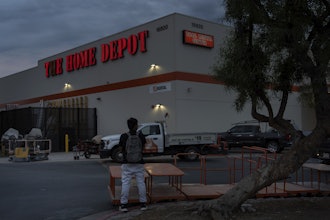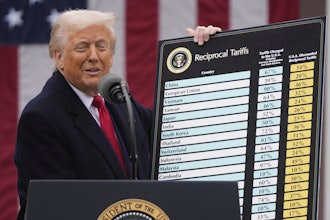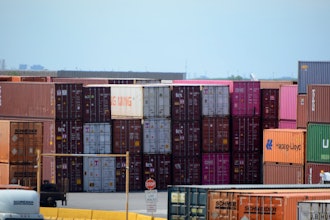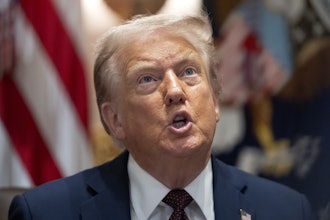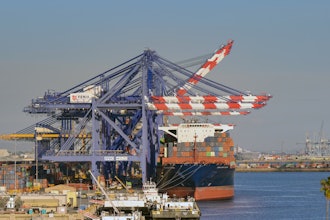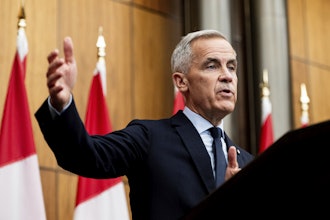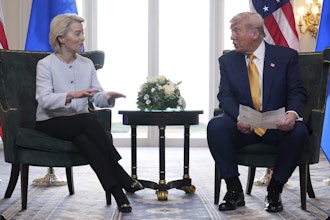
Tariffs have evolved from occasional policy instruments to persistent fixtures that are fundamentally reshaping the supply chain. For manufacturers and distributors, the ability to anticipate and adapt to these trade barriers has become a critical competitive differentiator. This is no longer about weathering a temporary storm but developing sustained resilience against an increasingly unpredictable trade landscape.
The Compounding Effect of Tariffs
When tariffs hit, they cascade through every level of the supply chain. The visible impact—increased costs—is merely the starting point. The 25% tariffs on steel and aluminum and the 104% duties on various Chinese imports have created ripple effects that extend far beyond simple price increases:
- Raw material costs surge, compressing margins throughout the value chain
- Lead times extend as customs processes become more complex
- Inventory carrying costs increase with higher-valued stock
- Cash flow pressure intensifies as working capital requirements expand
- Customer relationships strain under pricing volatility
For manufacturers, this translates to production cost inflation, particularly in metal-intensive industries. Distributors face the dual challenge of absorbing upstream price increases while maintaining downstream customer satisfaction. The combined effect demands strategic rather than reactive responses.
Strategic Pivots: Beyond Cost Absorption
Forward-thinking organizations are implementing multi-dimensional strategies rather than simply passing costs to customers:
Geographical Diversification
The most immediate response to tariff exposure is supplier diversification. Companies overly dependent on single-source or single-region procurement face disproportionate risk. Leading organizations are mapping their supplier networks against tariff exposure, identifying critical components with high vulnerability, and developing alternate sourcing channels.
This isn't merely about finding the next lowest-cost country. Strategic diversification considers total landed cost, quality consistency, intellectual property protection, and operational compatibility. In some cases, nearshoring or reshoring may offer greater long-term value despite higher unit costs by reducing tariff exposure and shortening supply lines.
Logistics Reconfiguration
Tariff engineering — restructuring supply flows to minimize duty impact—has become a sophisticated discipline. Companies are evaluating whether direct shipping, consolidated shipments, or bonded warehouses can reduce their duty liability. Some manufacturers are establishing assembly operations in strategic markets to avoid finished goods tariffs while maintaining core production elsewhere.
Foreign trade zones and bonded warehouses allow businesses to defer, reduce, or eliminate duties on goods that may be re-exported or further processed. For distributors handling imported goods, these mechanisms can create significant competitive advantages.
Contract Restructuring
The unpredictability of tariff policies has exposed weaknesses in traditional supply agreements. Progressive companies are revising contracts to include tariff adjustment clauses, creating mechanisms for equitable cost-sharing when trade policies shift. These agreements establish transparency protocols that align incentives throughout the supply chain rather than creating adversarial price negotiations each time tariffs change.
For distributors, implementing similar mechanisms with customers—such as transparent surcharge structures tied directly to verified tariff increases—helps maintain trust while protecting margins. The most effective companies pair these mechanisms with clear communication about the rationale and duration of such adjustments.
Financial Fortification
Tariffs strain working capital and credit capacity precisely when both are most needed. Companies must stress-test their financial models against various tariff scenarios and develop contingency funding plans. This might include:
- Securing expanded credit facilities before they're needed
- Revisiting payment terms with suppliers and customers
- Implementing inventory optimization to reduce carrying costs
- Exploring trade finance instruments that ease cash flow pressure
Technology Adoption
Data analytics and AI-driven forecasting have become essential tools for navigating tariff complexity. Leading companies are deploying predictive analytics to anticipate supply disruptions before they occur and scenario planning to evaluate alternative responses. Digital twins of supply networks allow organizations to model the impact of tariff changes before implementation, enabling proactive rather than reactive adjustments.
Blockchain-based traceability solutions provide immutable verification of country of origin and compliance with regional content requirements, crucial for claiming preferential treatment under various trade agreements. For manufacturers with complex multi-tier supply chains, this technological transparency is increasingly valuable.
The Competitive Advantage of Tariff Agility
The companies gaining market share in this environment aren't simply those with the lowest pre-tariff costs. Rather, they're organizations that have developed institutional agility around trade policy shifts. This capability manifests in several ways:
- Scenario-based planning that anticipates policy changes before they occur
- Cross-functional teams that can rapidly implement supply chain adjustments
- Supplier relationships focused on mutual adaptation rather than rigid terms
- Customer communication frameworks that maintain trust during price adjustments
- Regulatory intelligence networks that provide early warning of policy shifts
From Reactive to Strategic
The most important shift in tariff management is the transition from treating these policies as temporary disruptions to recognizing them as enduring features of the global trade landscape. Companies that build tariff resilience into their core operating models gain sustainable advantages that transcend individual policy changes.
For manufacturers and distributors navigating this complex environment, the imperative is clear: transform tariff management from a reactive finance function to a strategic supply chain capability. Those who do will find opportunity where others see only disruption, turning trade policy volatility into a source of competitive differentiation.
Mark Gilham is vice president, rebate advisory at Enable.










